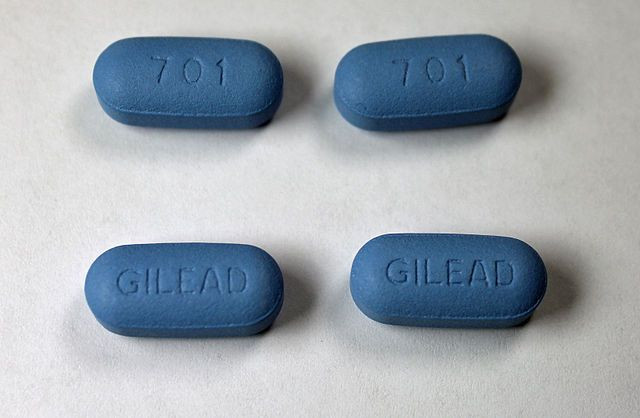Women Need Higher Doses Of Truvada Than Men To Prevent HIV Infection: Study

A recent study published in The Journal of Infectious Diseases shines a light onto a particular mystery surrounding a drug, Truvada, intended to help prevent HIV infection — namely why it's less effective in women than it is in men.
In both lab and human trials, the University of North Carolina (UNC) researchers tested how well the medication was absorbed by different parts of the human body, specifically the rectum, vagina, and cervix. Based on those results, they then created a computer model to calculate the minimal doses of Truvada a person of each gender would need to take in order to maintain protection. Mirroring previous research, the model estimated that women would need to take it almost daily, while men could conceivably skate by with two to three doses per week. 98 percent of people, regardless of gender, would achieve full protection by the third daily dose.
“Our data highlight the fact that one dose does not fit all,” said senior author Dr. Angela Kashuba in a statement. “In determining how best to use drugs to protect people from HIV, we need to understand where in their body they are at risk for being infected, along with the concentration of drug that is needed to protect that site from infection.”
Truvada is an antiretroviral cocktail combining two other HIV drugs, tenofovir and emtricitabine, and is the only medication currently approved by the Food and Drug Administration to serve as pre-exposure prophylaxis (PrEP) for HIV-negative people at higher than normal risk of contracting the disease, such as men who sleep with other men or who have HIV-positive partners.
In the study, the researchers first tested Truvada on lab-grown human cells. They then gave the drug to 47 women and collected their vaginal, cervical, and rectal tissue samples afterwards, measuring the levels of Truvada and its metabolic byproducts in each respective area. One particular reason the drug was weaker in women was simply that less of it reached the lower reproductive tract of women than it did their rectum. But there were also other differences, since the researchers concluded from the lab trials that more DNA material could be found in the former than in the latter, allowing the virus to more easily reproduce there.
“The more DNA material there is available for HIV to work with, the more medicine is needed to block the process,” said lead author Professor Mackenzie Cottrell, who works in the UNC Eshelman School of Pharmacy. “In essence, we calculated the most effective drug-to-DNA ratio for each tissue type.”
Despite the differences in effectiveness, the researchers advocate all prospective PrEP users stick to the established treatment guideline of a daily dose.
“We are excited to be able to apply our research methods to explain the conundrum of mixed clinical trial results of Truvada prevention, and how men and women should best use HIV prevention therapy,” Kashuba said. “Yet we would like to remind people who are taking pre-exposure prophylaxis that Truvada should be taken every day to reduce the risk of acquiring HIV infection. Patients should not change their medication regimen without first consulting their physicians.”
While PrEP has been lauded as an important tool in the ongoing fight to drive HIV rates down, it isn’t a perfect one. As previously reported by Medical Daily, a 43-year-old man who was on PrEp recently became HIV-positive despite having taken it regularly — the first real world case of treatment failure. It’s believed the patient was infected by a strain of HIV resistant to both components of Truvada.
Source: Cottrell M, Yang K, Prince H, et al. A Translational Pharmacology Approach to Predicting HIV Pre-Exposure Prophylaxis Outcomes in Men and Women Using Tenofovir Disoproxil Fumarate±Emtricitabine. The Journal of Infectious Diseases. 2016.
Published by Medicaldaily.com



























